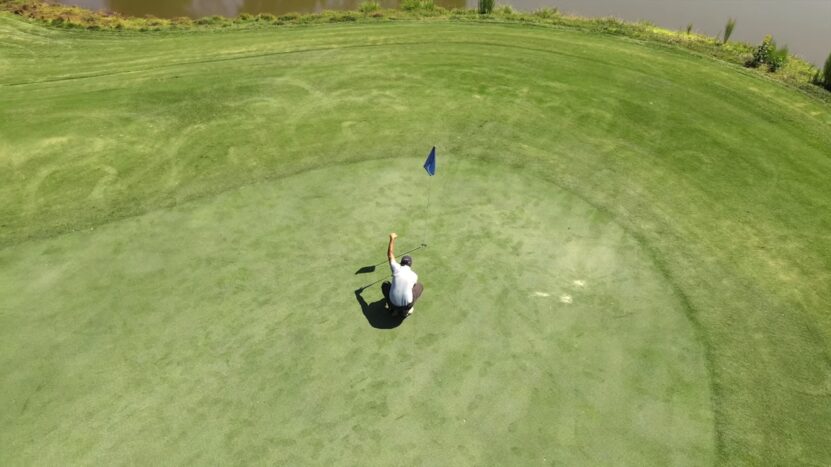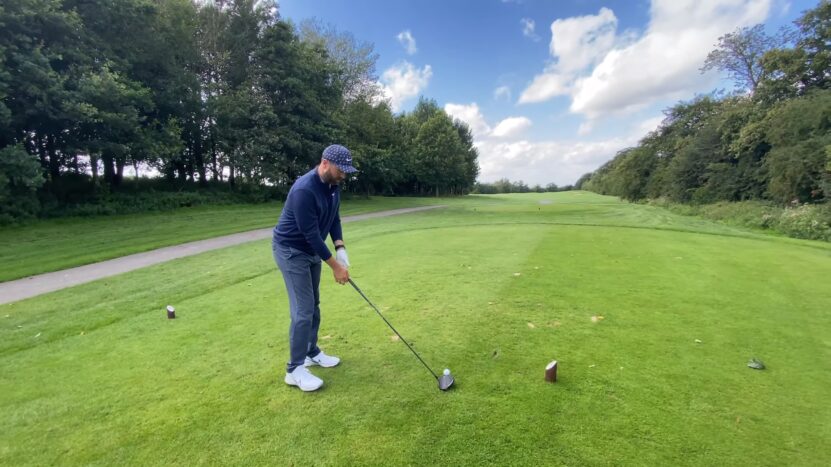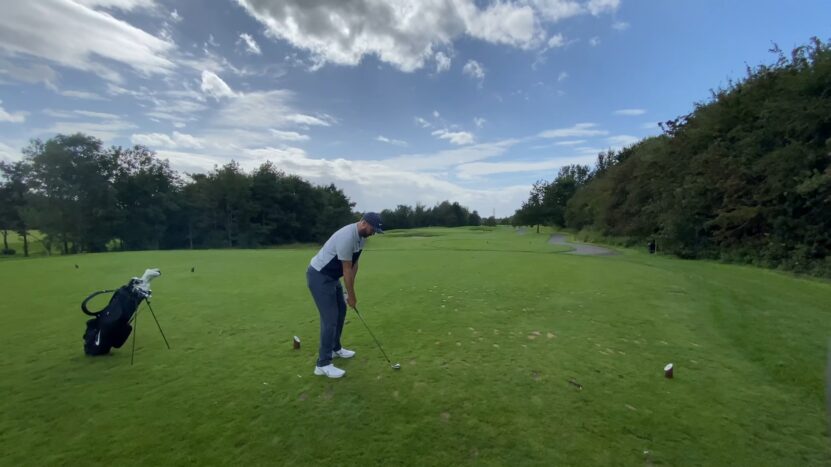Golf is a very popular individual sport that basically anyone can recognize. It is as unique as a sport can be with a premise, a set of rules, and a specific type of equipment not used anywhere else. These as well as other factors make it distinguishable from a mile away and a very intriguing sport to be a part of.
Whether as a fan, an occasional player, or a serious enthusiast who dreams of going pro, golf is a sport that people live and swear by. It has a lot to offer and its history combined with the modern rules is full of great stories. For example, do you know why there are 18 holes and can you guess how long they take?
While understanding the time it takes to play 18 holes of golf is essential, maintaining your equipment is equally important; check out our guide for keeping your golf clubs in top condition, ensuring peak performance on the course.
Early History of the Game
The sport of golf has a rich and storied history that spans some six centuries. The origins of the game are somewhat disputed and not entirely clear, but it is widely believed that the game originated in Scotland during the 15th century. The first recorded game of golf played with modern rules happened in Scotland in 1744, which is when the official history began.
In the early days of the sport, golf courses were often just open fields with a few holes and no standardized lengths or even rules. As the popularity of the game grew, golf courses began to be designed with a predetermined, set number of holes and specific lengths of the court. The goal was to make the game more challenging and competitive as well as more standardized.
The design of the golf course also evolved over time. Early golf courses were quite flat and lacked the variety of terrains and obstacles that are common features of modern courses. As the design became more sophisticated, courses began to incorporate hills, sand traps, water hazards, and other obstacles that challenged players and added to the overall experience and complexity of the game.
Standardization of the Holes and the Sport

In the late 19th century, the standard number of holes for a golf course was finally established to be 18, which remains the standard to this day. The reason for this specific number of holes is not entirely clear despite many theories existing, but it is believed to be a combination of practicality and tradition. With 18 holes, golfers can play a full round of golf without having to repeat any holes, and the length of the course can be adjusted to challenge players of different skill levels.
The 18-hole course actually first appeared during the 1700s when the dominant number was still 22. Before then, all the way from the 1400s and onwards, various hole totals were present, from as few as 7 (or fewer) to seemingly random numbers like 15 and then 22. Numerous different combinations existed with every court being too different from all the others. While the sport never lost popularity, players did start to feel like there were too many differences.
The year things started to change officially was 1764 when the owners of The Royal and Ancient Golf Club shortened their 22-hole course and turned it into 18. They did this to improve the links between the holes and make things more convenient. The first four short holes became two, producing a total of 18 holes. Well, there were still only 10 holes but 8 were played twice. Still, this was the beginning of the 18-hole golf course and around 100 years later, most other courses adopted the system.
Nowadays, in addition to the standard 18-hole course, there are also 9-hole courses and executive courses designed for players who have limited time or want a more relaxed round of golf. Some courses also offer alternative hole arrangements like the par-3 course designed to be played in a shorter amount of time and is often used for beginner golfers. The rich history and all the changes that came gave us a very versatile game today that spawned other great games like mini golf.
In addition to understanding the time commitment for playing 18 holes of golf, you might be curious about the layout and size of a typical golf course; our article provides fascinating insights into the acreage and landscape components that make up these vast playing fields.
Average Duration of An 18-Hole Golf Game

So now that there is a standardized way to play a round of golf that has been adopted far and wide, how long does it take on average for it to be completed? What does it even mean to complete a round of 18 holes in golf? Completing a round of 18 in golf refers to playing all 18 holes in one playing session. A round consists of playing each of the 18 holes once, starting from the first tee and ending on the 18th green.
The number of strokes a golfer takes on each hole is recorded to determine their score for the round. The goal is to complete all holes in the fewest number of strokes possible. In a standard round of 18, the total number of strokes for a golfer is recorded as their score for the round. The score is used to determine the performance relative to the standard of par for the course, the par being a predetermined standard score for every hole used as a referral.
A golfer who completes a round of 18 in fewer strokes than the par score is “under par,” while a golfer who takes more is “over par.” Completing a round of 18 in golf is a challenging but rewarding experience for golfers of all skill levels. The sport requires skill, strategy, and a lot of patience, and the satisfaction of completing the entire 18 is among the reasons why the sport continues to be so popular worldwide.
The length of time it takes to play the whole 18-hole course varies greatly depending on a few factors, including the pace of play, player skill level, the course, the weather, etc. On average, it takes a group of recreational golfers about 5 hours to complete the entire 18 holes. This means each of them goes through all the holes, not just for the winner to do it first. For more experienced players, it is closer to 3 hours. Of course, rounds can take longer, especially on busy weekends and holidays.
Many contemporary golf courses have a maximum time limit for each round, usually around 4 and a half hours on average. This is to ensure that everyone has a chance to play the course and to keep the pace of moving. So, if you are playing 18 holes, it is a good idea to keep an eye on the time and not take too long with each hole. You may risk never completing it on time!
Factors Affecting the Time It Takes

Player Skill Level
One of the most significant factors influencing the time it takes to play 18 holes is the skill level of the players. Beginners may require more time to navigate the course, make decisions, and execute shots. In contrast, experienced players often have a quicker pace, taking less time between shots and needing fewer strokes to complete each hole.
Group Size
The number of players in a group impacts the time spent on the course. A foursome, for example, will take longer to complete a round than a twosome, as each player must wait for their turn to play. However, having more players in a group can also help maintain a steady pace, as players can alternate hitting their shots and keep things moving.
Course Design and Difficulty
The layout and difficulty of a golf course play a significant role in the time it takes to complete a round. More challenging courses with longer holes, more hazards, and trickier greens can slow down play. Additionally, courses with significant elevation changes or long distances between holes may require more time to navigate.

Wait Times and Course Congestion
Course congestion can significantly impact the time it takes to play 18 holes. On busy days or during peak seasons, wait times at each tee box can add up quickly, causing delays and a slower pace of play. Additionally, slower groups or inexperienced players can create bottlenecks on the course, further extending the time needed to complete a round.
Use of Golf Carts vs. Walking
Whether players choose to walk or use golf carts can also influence the duration of a round. Golf carts can help speed up play by covering distances more quickly and allowing players to focus on their shots. However, if used inefficiently or if cart-path-only rules are in place, carts may not significantly reduce the time spent on the course.
Tips for Reducing the Time

Improve Your Skill Level
One of the most effective ways to reduce the time it takes to play 18 holes is to improve your golfing skills. By taking lessons, practicing regularly, and refining your techniques, you can reduce the number of strokes needed to complete each hole and maintain a quicker pace of play. As your proficiency increases, you’ll likely find that your time spent on the course decreases.
Be Prepared
Being prepared when it’s your turn to play can help keep the game moving at a steady pace. Make sure you have your club selection and shot strategy ready before it’s your turn. This will minimize delays and help maintain a smooth flow of play.
Play Ready Golf
“Ready golf” is a concept that encourages players to hit their shots when they are ready rather than strictly adhering to the traditional order of play. By prioritizing readiness over order, groups can significantly speed up their pace of play and reduce the time spent waiting for other players.
Be Mindful of Other Groups
Keeping an eye on the group ahead of you and the group behind you can help maintain a steady pace on the course. If you notice that your group is falling behind, try to pick up the pace to avoid causing delays for others. Similarly, if you’re playing faster than the group ahead, be patient and consider using the opportunity to practice your short game or enjoy the scenery.
Schedule Your Tee Time Wisely
Choosing a tee time that is less likely to be congested can help reduce the time it takes to play 18 holes. Early morning and late afternoon tee times often have less traffic, allowing you to play at a quicker pace. Additionally, playing on weekdays or during off-peak seasons can also help avoid course congestion.
The Impact of Time on Golf Course Etiquette

Maintaining proper golf etiquette is essential, regardless of the time it takes to play 18 holes. Some key aspects of golf etiquette related to time and pace of play include:
- Keeping Up with the Group Ahead: A fundamental rule of golf etiquette is to keep up with the group ahead of you, rather than focusing on the group behind. This helps maintain a consistent pace of play throughout the course, ensuring that all players can enjoy their rounds without unnecessary delays.
- Allowing Faster Groups to Play Through: If your group is playing at a slower pace than the group behind you, it’s essential to allow them to play through when it’s safe and appropriate. By doing so, you’ll help maintain a smooth flow of play and avoid causing frustration for other players.
- Being Aware of Your Surroundings: Being mindful of other players on the course is crucial for maintaining proper golf etiquette. When hitting your shots, always check that the area is clear and that you’re not putting other players at risk. Additionally, be conscious of your noise level and avoid causing distractions for other golfers.
Final Words
Understanding the factors that influence the time it takes to play 18 holes of golf can help you better plan your next golf outing and manage your expectations. By considering player skill levels, group size, course design, wait times, and transportation methods, you can gain a clearer picture of how long your round may take.
Furthermore, by implementing strategies to reduce your time on the course, such as improving your skills and playing ready golf, you can enjoy a more efficient and enjoyable experience. Ultimately, maintaining proper golf etiquette and being mindful of other players is essential for a harmonious and pleasant golfing experience for everyone on the course.

